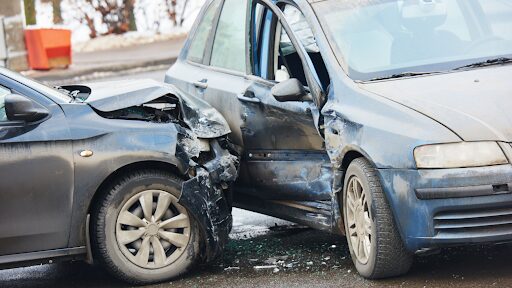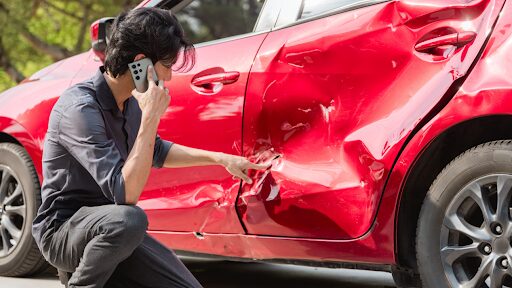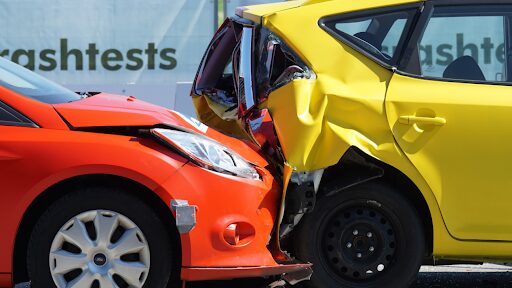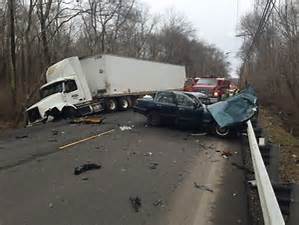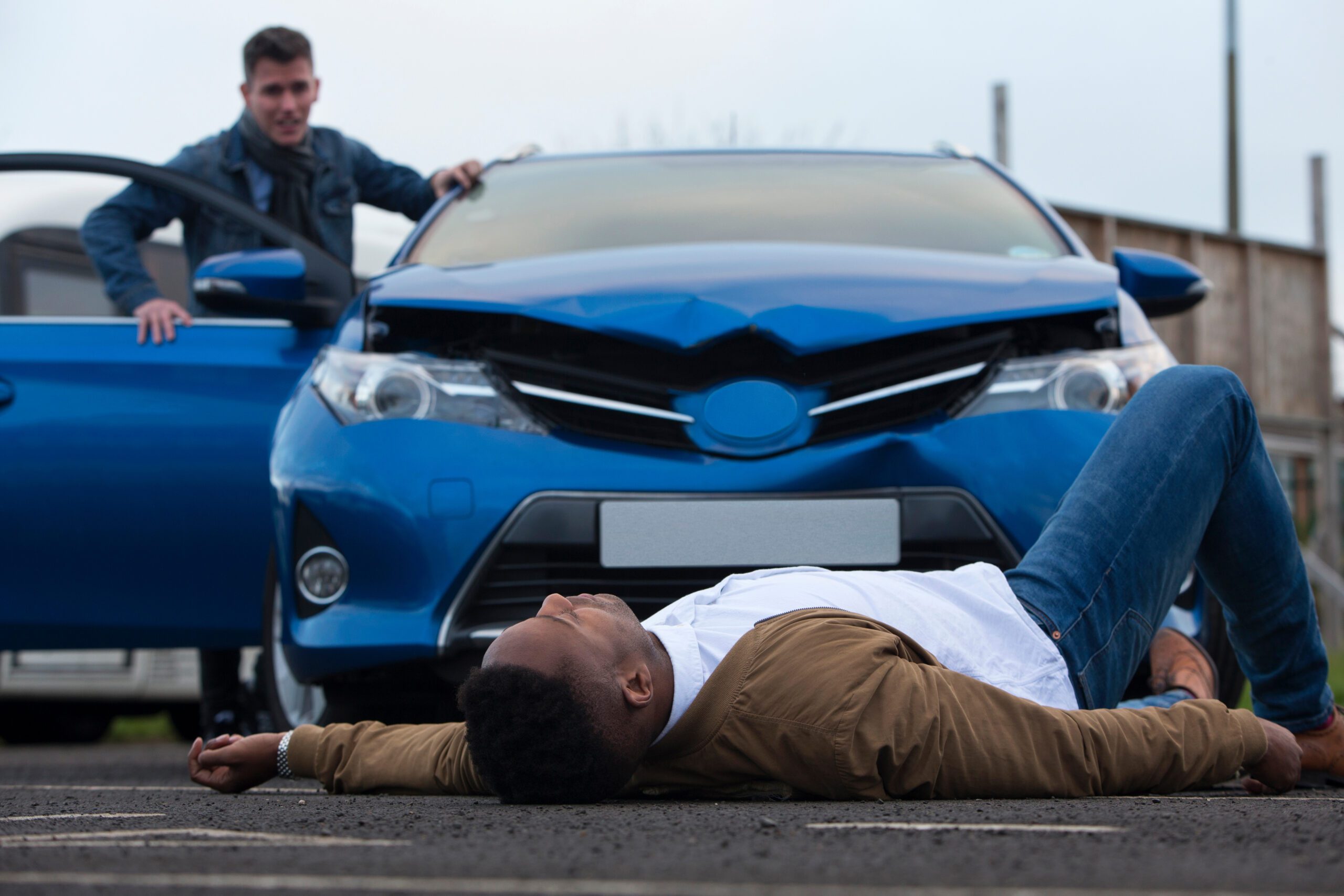Rear-end collisions are among the most common types of car accidents on our roads today. If you’ve been struck from behind by another vehicle, you may be dealing with injuries, vehicle damage, medical bills, and uncertainty about what to do next. These accidents often seem straightforward, but they can involve complex legal and insurance issues that affect your ability to recover fair compensation.
At Prince & Associates, PLLC, we understand the physical, emotional, and financial toll that rear-end collisions take on victims and their families. Whether you’re experiencing whiplash, back injuries, or more severe trauma, you deserve experienced legal guidance to protect your rights. Our team has decades of experience helping injury victims navigate the claims process and secure the compensation they need to move forward with their lives.
What Is a Rear-End Collision?
A rear-end collision occurs when one vehicle crashes into the back of another vehicle. These accidents happen in various traffic situations—at stop lights, in heavy traffic, during sudden stops, or when a driver fails to notice slowing or stopped vehicles ahead. The force of impact can range from a minor bump to a high-speed crash that causes catastrophic injuries.
Most rear-end collisions result from driver negligence. The trailing driver typically bears responsibility because every motorist has a legal duty to maintain a safe following distance and remain alert to traffic conditions. When drivers fail to uphold this duty, they can be held liable for the injuries and damages their negligence causes.
These accidents may appear simple at first, but the legal and medical complexities can quickly become overwhelming. Insurance companies often try to minimize payouts, dispute injury claims, or pressure victims into accepting inadequate settlements before they understand the full extent of their damages.
Common Causes of Rear-End Collisions
Understanding how rear-end collisions happen helps establish liability and strengthens your injury claim. Several factors commonly contribute to these accidents:
Distracted driving remains one of the leading causes. When drivers text, adjust their GPS, eat, or engage in other activities that take their attention from the road, they cannot react quickly enough to avoid rear-ending the vehicle ahead. Even a momentary distraction can have devastating consequences.
Following too closely, or tailgating, eliminates the buffer zone drivers need to stop safely. When the lead vehicle brakes suddenly, the trailing driver has insufficient time and space to avoid a collision. Aggressive driving behaviors often involve dangerous following distances that violate traffic safety laws.
Speeding and excessive speed make it difficult for drivers to stop in time. The faster a vehicle travels, the longer the stopping distance required. Drivers who exceed posted speed limits or drive too fast for weather and traffic conditions increase the risk of rear-end accidents significantly.
Impaired driving from alcohol, drugs, or certain medications slows reaction times and impairs judgment. Intoxicated drivers cannot process traffic situations effectively or respond appropriately to changing conditions. Drowsy driving produces similar impairments and is a frequent factor in rear-end collisions.
Poor weather conditions such as rain, fog, ice, or snow require extra caution. Drivers who fail to adjust their speed and following distance for reduced visibility or slippery roads may lose control or be unable to stop before hitting the vehicle ahead.
Mechanical failures, including brake problems, worn tires, or malfunctioning lights, can also contribute to rear-end accidents. Vehicle owners have a responsibility to maintain their cars in safe operating condition.
Determining Liability and Your Right to Compensation
In most rear-end collision cases, the driver who struck the vehicle from behind is presumed to be at fault. This presumption exists because drivers must maintain control of their vehicles, watch the road ahead, and keep a safe following distance at all times. However, establishing liability requires more than just the fact that you were rear-ended.
Your personal injury claim must demonstrate that the other driver’s negligence directly caused your injuries. This means showing that the driver owed you a duty of care, breached that duty through careless or reckless behavior, and that this breach resulted in your injuries and damages.
Documentation is critical to proving your case. Police reports, witness statements, photographs of vehicle damage and the accident scene, traffic camera footage, and medical records all help establish what happened and the extent of your injuries. The position of the vehicles, skid marks, debris patterns, and damage locations provide important evidence about the collision dynamics.
You may be entitled to compensation for multiple categories of damages. Economic damages include medical expenses, lost wages, property damage, and future medical care costs. Non-economic damages cover pain and suffering, emotional distress, loss of enjoyment of life, and permanent disability or disfigurement. In cases involving egregious negligence or intentional misconduct, punitive damages may also be available.
Insurance companies will investigate your claim, but remember that they prioritize their bottom line over your recovery. They may attempt to argue that you contributed to the accident by stopping suddenly or that your injuries aren’t as severe as you claim. Don’t let insurance adjusters pressure you into giving recorded statements or accepting quick settlements without legal representation.
Call (888) 844-9406) or email contactus@princelawassociates.com to discuss your case with an experienced attorney before making any decisions.
Steps to Take After a Rear-End Collision
The actions you take immediately after a rear-end collision can significantly impact your health, safety, and legal rights. Following these steps protects both your wellbeing and your ability to recover compensation:
Prioritize safety and medical attention. Check yourself and passengers for injuries, and call 911 if anyone needs emergency care. Even if you feel fine initially, adrenaline can mask pain and injury symptoms. Seek medical evaluation as soon as possible, as many rear-end collision injuries don’t show symptoms immediately.
Report the accident to police. Always contact law enforcement and request an official accident report, regardless of how minor the collision seems. This report provides crucial documentation of the incident and the officer’s preliminary assessment of fault.
Gather evidence at the scene. If you’re able, take photographs of all vehicles involved, visible damage, license plates, the surrounding area, traffic signs, and road conditions. Collect contact information from the other driver, including their name, phone number, insurance details, and driver’s license number. Get names and contact information from any witnesses.
Avoid making statements about fault. Be polite and cooperative, but don’t apologize or admit blame at the scene. Stick to factual information when speaking with police and the other driver. Do not discuss the accident details with insurance representatives without consulting an attorney first.
Notify your insurance company. Report the accident promptly, but provide only basic facts about when and where it occurred. You don’t need to give a detailed recorded statement immediately, especially before understanding the full extent of your injuries.
Keep detailed records. Document everything related to your injuries and the accident’s impact on your life. Save all medical bills, prescription receipts, repair estimates, and correspondence with insurance companies. Keep a journal noting your pain levels, symptoms, medical appointments, and how injuries affect your daily activities.
Contact an experienced personal injury attorney. Legal representation is essential for protecting your rights and maximizing your compensation. An attorney can handle communications with insurance companies, gather evidence, calculate the true value of your claim, and negotiate on your behalf.
Common Mistakes to Avoid After a Rear-End Collision
Many accident victims unknowingly damage their claims by making avoidable mistakes. Being aware of these pitfalls helps you protect your rights and preserve your ability to recover full compensation.
Don’t delay medical treatment. Insurance companies often argue that delayed treatment means injuries aren’t serious or weren’t caused by the accident. Get evaluated by a healthcare provider within 24-48 hours, even if you feel okay. Document all symptoms and follow your doctor’s treatment recommendations completely.
Don’t accept the first settlement offer. Initial offers from insurance companies are typically far below the true value of your claim. They hope you’ll accept quickly before realizing the full extent of your injuries and losses. Once you accept a settlement, you usually cannot pursue additional compensation later, even if your condition worsens.
Don’t post on social media. Insurance companies monitor accident victims’ social media accounts looking for content that contradicts injury claims. Even innocent posts can be taken out of context and used against you. Avoid discussing the accident, your injuries, or your activities online until your case is resolved.
Don’t give recorded statements without legal counsel. Insurance adjusters may seem friendly and helpful, but they’re trained to ask questions that elicit answers favorable to the insurance company. You have no legal obligation to provide a recorded statement to the other driver’s insurance company.
Don’t sign medical releases broadly. Insurance companies may request authorization to access your medical records, but overly broad releases can give them access to unrelated medical history they might use to devalue your claim. Have an attorney review any releases before signing.
Don’t miss filing deadlines. Personal injury claims are subject to statutes of limitations—legal deadlines by which you must file a lawsuit. While these vary by jurisdiction, waiting too long can forfeit your right to compensation entirely.
Frequently Asked Questions About Rear-End Collisions
How long do I have to file a rear-end collision injury claim?
The statute of limitations for personal injury claims varies depending on where the accident occurred, but typically ranges from one to six years. However, you shouldn’t wait to take action. Evidence can disappear, witnesses’ memories fade, and your ability to build a strong case diminishes over time. Consulting an attorney soon after your accident ensures you meet all deadlines and preserve critical evidence.
What if the other driver doesn’t have insurance?
Uninsured motorist coverage on your own insurance policy may provide compensation when the at-fault driver lacks insurance. You might also pursue a claim against the other driver personally, though collecting compensation can be challenging. An experienced attorney can explore all available options for recovery and help you navigate the complexities of uninsured motorist claims.
Can I still recover compensation if I was partially at fault?
Many jurisdictions follow comparative negligence rules, which allow you to recover damages even if you bear some responsibility for the accident. Your compensation may be reduced by your percentage of fault. For example, if you’re found 20% at fault and your damages total $100,000, you could recover $80,000. Some states have different rules, so legal guidance is essential.
What types of injuries are common in rear-end collisions?
Whiplash and other neck injuries are most common due to the sudden forward-and-backward motion of the head. However, rear-end collisions also frequently cause back injuries, spinal cord damage, traumatic brain injuries, facial injuries from airbag deployment, broken bones, and soft tissue damage. Some injuries may have delayed symptoms, making prompt medical evaluation critical.
Your Path Forward: Get the Legal Support You Deserve
Rear-end collisions can turn your life upside down in an instant. Between managing your injuries, dealing with insurance companies, and worrying about mounting bills, you need someone in your corner fighting for your rights. You shouldn’t have to navigate this complex process alone while trying to heal from your injuries.
Prince & Associates, PLLC has dedicated decades to helping accident victims secure the compensation they deserve. We understand the tactics insurance companies use to minimize payouts, and we know how to counter them effectively. Our team handles every aspect of your case so you can focus on your recovery while we pursue the maximum compensation available for your injuries and losses.
Don’t let the insurance company take advantage of you during this vulnerable time. Your initial consultation is free, and you won’t pay attorney fees unless we recover compensation on your behalf. We’ll review your case, explain your legal options, and provide honest guidance about the best path forward.
Call (888) 844-9406 or email contactus@princelawassociates.com today to schedule your free consultation. Time is critical in building a strong case, so reach out now to protect your rights and start your journey toward justice and recovery.
